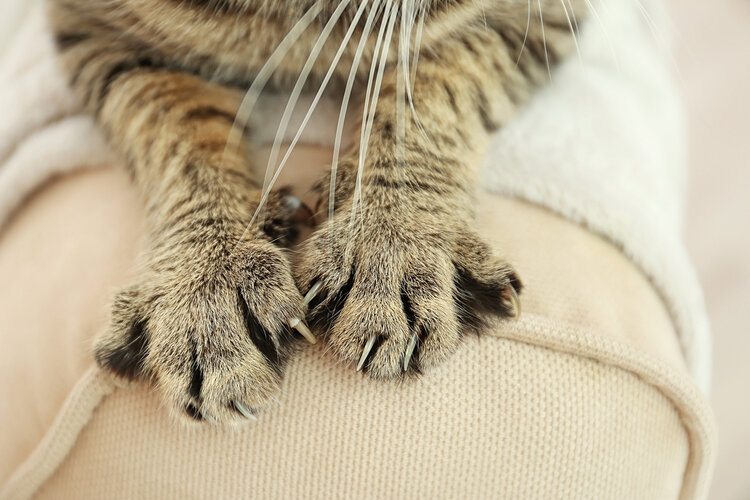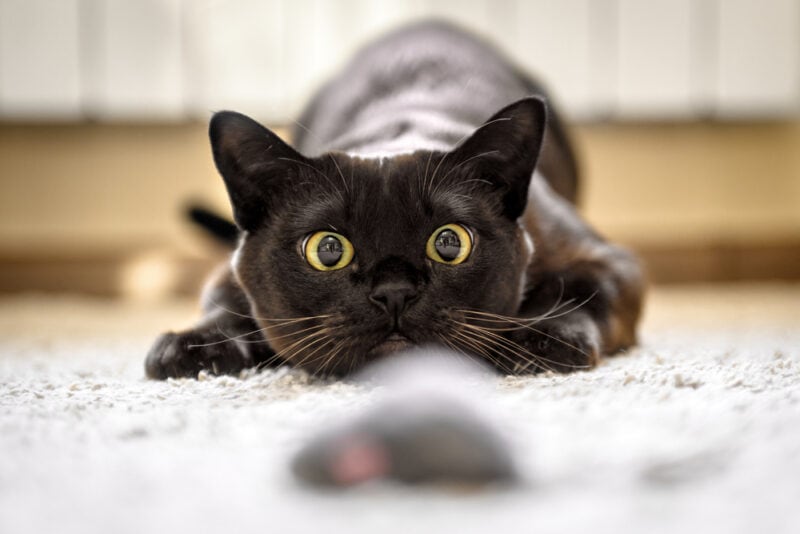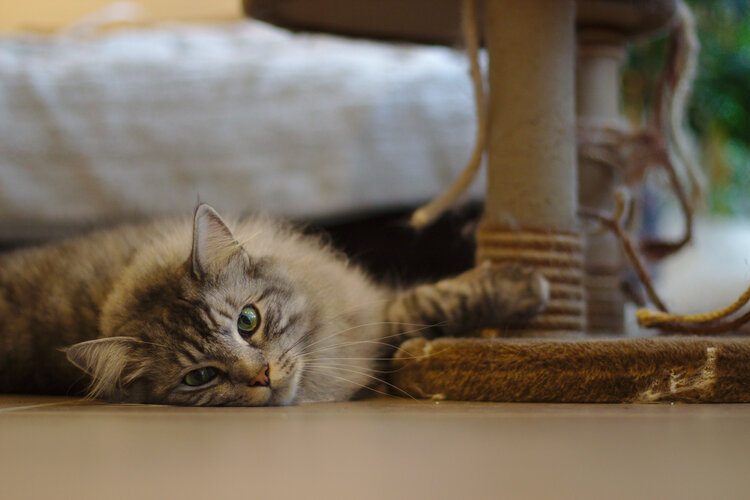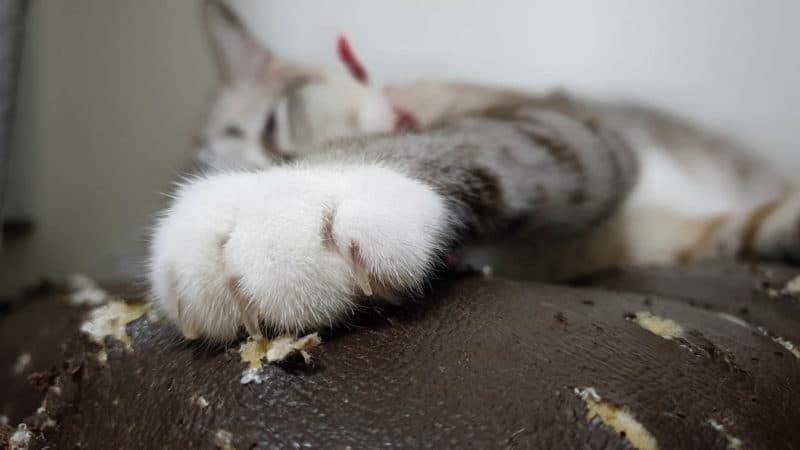Have you lost count of how many times you’ve had to stop your cat from scratching your couch, carpet, or curtains? While cat scratching is nothing new to their owners, you may be left wondering why your feline participates in this activity. Scratching is perfectly normal cat behavior and is used to keep their claws in top form, stretch their muscles and back, and as a means of marking their territory and communicating with other cats.
Here, we’ll fully explore what cat scratching is, the top reasons behind it, and how to curb your kitty from ripping your prized possessions to shreds.
What Is Cat Scratching?
Also known as stropping, cat scratching is when a feline drags their claws across a vertical or horizontal surface. Many cats will scratch at something that sparks their interest, such as a textured or coarse surface. It’s a normal and healthy behavior that cats often use to mark their territory, sharpen their claws, or to prepare for physical activity by having a good body stretch.
While cat scratching may be a bothersome behavior from an owner perspective, you should never attempt to put an end to it. Cats have been scratching various surfaces for a very long time, and this instinctive behavior can be kept under control by ensuring they have plenty of scratching posts and get enough physical and mental stimulation every day.
The 4 Reasons Why Cats Scratch
The top reasons behind your cat’s scratching include the following:
1. Honing Their Nails
Cats will scratch to loosen and remove the dead outer husk of their claw and reveal the sharp, new claw beneath.

2. Exercise
Scratching is a wonderful form of exercise for cats. Do you love stretching out your back and neck when you first wake up? Your kitty certainly does! During a scratching session, your cat can efficiently stretch their back, legs, and paws. Best of all, they can also enjoy some pampering time when they clean and sharpen their claws.
3. Instinct
Your fluffy feline friend’s wild ancestors scratch tree trunks to keep their claws fresh and sharp for the hunt while leaving their mark for the other cats to find.
All cats have an ingrained urge to scratch. It’s important to cater to these natural instincts by providing your cat with something to scratch, such as a kitty scratching post.

4. Territory
A cat will feel most relaxed in a space they can call their own. In order to communicate that your living room is also theirs, they may scratch at the sofa or carpet in order to mark their scent and presence to other animals, particularly if they like the texture.
This may be more commonly done by insecure and anxious cats, those living in a multi-cat household, or in case of new neighborhood cats that are coming close to your home. Cats that have outdoor access will scratch in various areas in the garden while leaving their mark and scent from the glands in their paws, letting the neighboring cats know that this is their territory.
Stopping Your Cat from Inappropriate Scratching
While you fully accept your cat’s need to scratch, you may not like it when they do it to your beloved sofa.

Here are some tips to keep your kitty from inappropriate scratching:
- Speak to Your Vet or a Feline Behaviorist: Getting down to the root cause of excessive scratching is crucial in order to understand and manage the issue. Anxiety and insecurity should be addressed, as they may lead to long-term health issues.
- Get a Scratching Post: Cats will put their whole bodies into the act of scratching. In order to encourage your cat to use a scratching post, be sure to purchase one that is large enough but also easily fixed in place or heavy, so it doesn’t move as they use it. Each cat in a household needs at least one scratching post.
- Consider Their Scratching Preferences: Does your cat prefer scratching at a vertical sofa leg or a horizontal carpet? Understanding their preferred scratching method will tempt them even more to use an item that they’re meant to scratch on, if it ticks all the boxes.
- Natural Textures: In the wild, cats will use tree trunks and other natural surfaces to scratch on. Choose a scratching post made from natural materials, such as sisal fiber, cardboard, or bark, to play to their natural instincts.
- Make It Unappealing: Make items that you don’t want your cat to scratch unappealing for them. Cover the item with a double-sided adhesive tape, but make sure it’s not too sticky for the cat’s paws. Place the scratching post very close to the sofa to redirect the scratching to the post instead, and slowly move it further and further away. Be patient, as this may take time.
Cat Scratching: The Bottom Line
Scratching is a natural and instinctive behavior for all cats. They do it to exercise, mark their territory, and keep their claws sharp.
If you want to keep your cat from scratching your carpet or furniture, provide an alternative scratcher. Select a scratching post that is made from natural materials, thus making it more appealing to your cat, and place it strategically in the area where they tend to scratch the most. Ensure that each cat has at least one scratching post.
The veterinary community is strongly opposed to declawing procedures because these are inappropriate, painful, and unjustifiable methods. Plus, cats need their claws to perform multiple daily functions. Scratching is a normal behavior in cats, and if their environment is safe, stimulating, and enriching, it is unlikely they will display excessive scratching. Speak to your vet or feline behaviorist if you think your cat is scratching excessively, as it could be a sign of an underlying issue.
Yes, cats scratch. However, you can redirect unwanted scratching and keep your prized possessions safe while still allowing your cat to indulge their inner urges.
Looking for some cat-scratching options? Try our Best Wall Mounted Cat Scratchers!
- Related Read: Can Cats Detect Mold? The Answer is Fascinating!
Featured Image Credit: RJ22, Shutterstock













